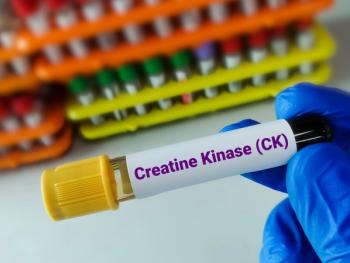
Mefloquine Could Help Enhance Certain DMD Therapies
A new report suggests combining the antimalarial drug with aminoglycosides could enhance the latter’s efficacy, which could also have important safety implications.
New research into the interplay between aminoglycosides and the antimalarial drug mefloquine (MFQ) could have major implications for certain patients with Duchenne muscular dystrophy (DMD).
The findings suggest that mefloquine could be used to enhance existing therapies and reduce toxicities for patients whose DMD mutations involve premature stop codons. An estimated 10% to 15% of patients with DMD fall into that category.
Albert Guskov, Ph.D., of the University of Groningen, in the Netherlands, told Managed Healthcare Executive that certain patients with DMD have mutations known as nonsense mutations that introduce premature stop codons into genes. Those nonsense mutations act like stop signs, causing cells to produce incomplete, dysfunctional proteins.
These errors underlie a number of genetic disorders, including DMD. Aminoglycosides address this problem by binding to the protein-making mechanism of the cell and “tricking” the ribosome into ignoring the stop signs and continuing to make complete proteins, he said. That process is called “read-through.”
Aminoglycosides such as gentamicin or the DMD-specific therapy Translarna (ataluren) are both read-through therapies that are currently used in certain patients with DMD, Guskov said.
“Unfortunately, these therapies have limited effectiveness and significant toxicity at higher doses,” he explained. Toxicities associated with high doses of aminoglycosides can include kidney damage, hearing loss, and other serious side effects, he added.
In a new study,
“The phenomenon was well-known, but nobody could understand why it happens,” he said.
They used X-ray crystallography and single-particle cryogenic electron microscopy to analyze aminoglycosides (geneticin G418, paromomycin, and hygromycin B), as well as mefloquine. That research helped them understand the binding site of mefloquine, which helps explain why it seems to help read-through therapies.
“We found that MFQ binds the ribosome in a different area (between its two subunits), altering the ribosome’s shape and movement,” he says. “This indirectly makes it easier for aminoglycosides to promote read-through, significantly increasing the production of full-length, functional proteins.”
For patients with DMD, the findings mean that mefloquine can be used to enhance the ability of read-through therapies like aminoglycosides to promote the production of full-length functional dystrophin proteins.
“This means that lower doses of drugs like aminoglycosides could be used, potentially reducing side effects and increasing patient safety,” Guskov said.
The findings could potentially apply to a number of genetic diseases beyond DMD, including cystic fibrosis and even certain cancers, Guskov and colleagues wrote.
Another benefit of the findings, Guskov noted, is that mefloquine has already been approved by the FDA as a treatment for malaria, meaning its pharmacological properties and safety profile are already well documented. He said that means the regulatory pathway of a combination therapeutic approach involving mefloquine could move through the regulatory process more quickly than an entirely novel compound would. Still, he said it will be important to run clinical trials specifically in a DMD population to ensure the safety and efficacy of such a combination and to clarify the optimal dosing.
Guskov added that it is possible these findings could be used to spark the development of entirely new molecules that can replicate the effects of mefloquine, though such a development would likely be years away.
Newsletter
Get the latest industry news, event updates, and more from Managed healthcare Executive.





















































